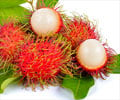Emory University researchers have discovered how Salmonella escapes the immune system to cause life-threatening intestinal infections by studying a fruit fly model.
In a transgenic fruit fly (drosophila) model, the researchers headed by Andrew Neish, MD, Emory professor of pathology and laboratory medicine, have found that an effector protein or virulence factor, called AvrA, secreted by invading organisms to seize the host immune response, puts a stop to two immune signaling pathways JNK and NF-kB.Apart from this, AvrA also turns off the fail safe system organisms have evolved to respond to irreversible threats. This immune defense is called apoptosis and eradicates invaders along with the infected cells through a system of programmed cell death.
In previous research, it was shown that AvrA could suppress some aspects of immune system signaling in cell culture, but now the researchers wanted to foucs their study on the protein in a whole animal system.
"Bacterial proteins are notoriously difficult to study. Using the drosophila system allowed us to express bacterial proteins in a controlled fashion. We were able to study salmonella infection and the associated proteins and signaling mechanisms in a whole animal, which gave us information we could not have gained from a cell culture dish," says Neish.
For examining the effects of AvrA in natural salmonella infection in mammals, the scientists used a mouse model of salmonella infection and discovered that AvrA limited the same immune signaling pathways and apoptotic reaction as in the drosophila model.
Also, a mutant form of the salmonella without the AvrA protein led to an enhanced inflammatory immune response and markedly more cell death in the mouse intestine.
Advertisement
The resuls of this study are reported in the current issue of the journal Cell Host and Microbe.
Advertisement
RAS/L











